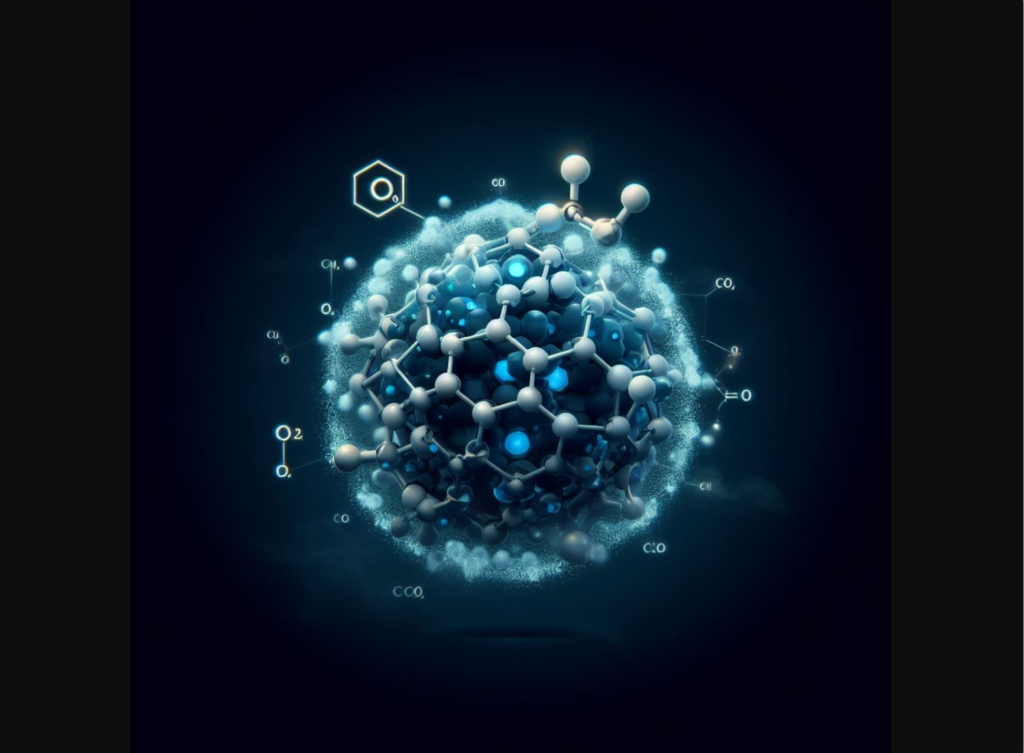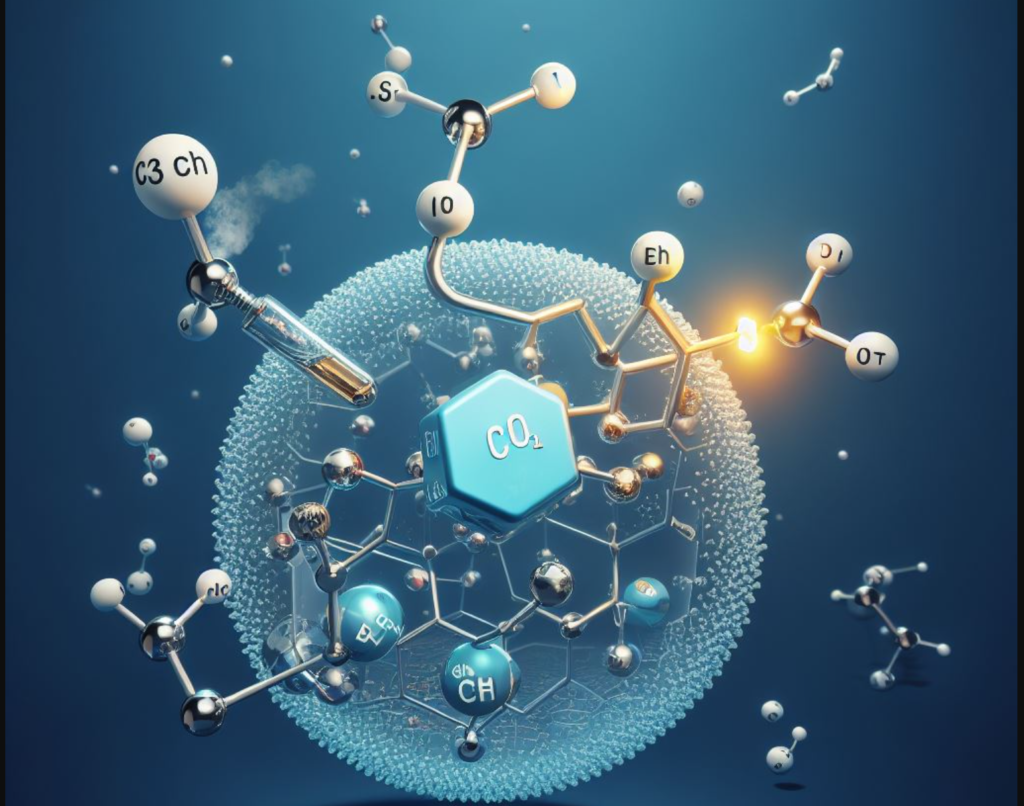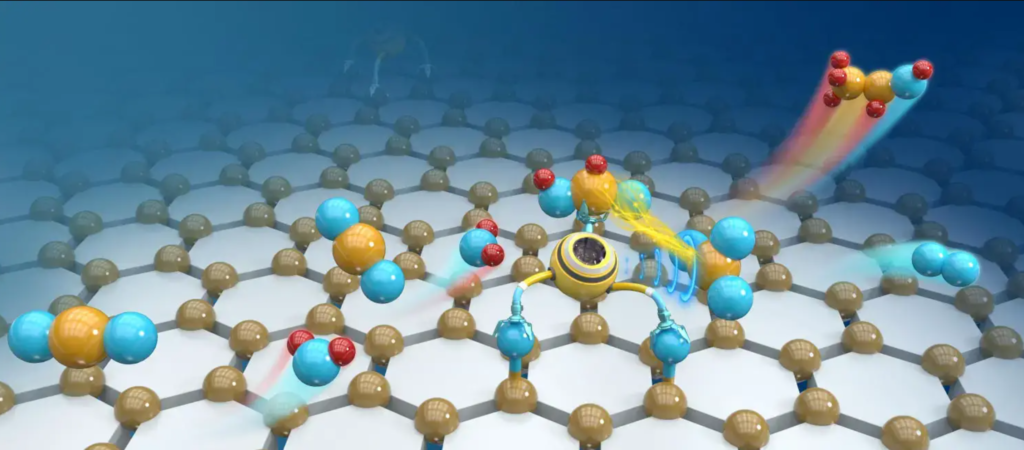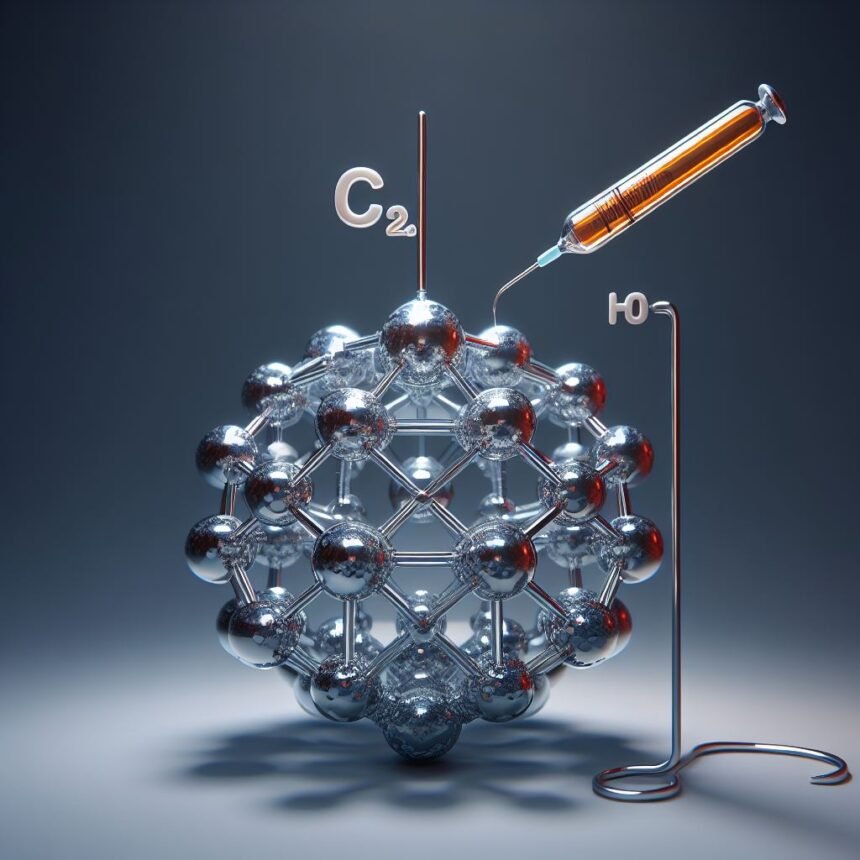In the quest for sustainable energy solutions scientists have achieved a remarkable breakthrough : a single atom catalyst that efficiently converts carbon dioxide (CO2) into ethanol. This eco-friendly advancement represents a significant step forward in renewable energy technology.
The Challenge of Carbon Dioxide Reduction
As the world grapples with climate change and the need to reduce greenhouse gas emissions, finding innovative ways to utilize Carbon Dioxide becomes crucial. Traditional methods of Carbon Dioxide reduction often involve complex and energy-intensive processes. However, recent research has focused on electrocatalytic CO2 reduction reactions (CO2 RR) as a promising alternative.

The Sn-Based Tandem Electrocatalyst
A team of researchers led by Professors Zhang Tao and Huang Yanqiang from the Dalian Institute of Chemical Physics (DICP) at the Chinese Academy of Sciences has developed a groundbreaking catalyst. This tandem electrocatalyst, known as SnS2@Sn1-O3G, demonstrates impressive results in transforming Carbon Dioxide into ethanol.
Here are the key findings:
SOURCE :YOUTUBE
- Efficient Ethanol Production: The SnS2@Sn1-O3G catalyst consistently yields ethanol with a remarkable Faradaic efficiency of up to 82.5% at -0.9 V RHE (reversible hydrogen electrode) and a geometric current density of 17.8 mA/cm2.
- Formyl-Bicarbonate Coupling Pathway: Mechanistic studies revealed that Sn1-O3G can adsorb *CHO and *CO(OH) intermediates, promoting C-C bond formation through an unprecedented formyl-bicarbonate coupling pathway. This novel approach allows for the efficient synthesis of ethanol.
- Tracing Carbon Atoms: By using isotopically labeled reactants, the researchers traced the pathway of carbon atoms in the final C2 product formed over the Sn1-O3G catalyst. The analysis indicated that methyl C in the product originates from formic acid, while methylene C comes from CO2.
Implications and Future Directions

This study provides an alternative platform for C-C bond formation in ethanol synthesis. It also offers a strategy for manipulating Carbon Dioxide reduction pathways to achieve desired products. Here are some implications:
- Green Energy: Ethanol is a valuable fuel with high energy density. Its production from CO2 and renewable electricity represents a significant step toward sustainable energy solutions.
- Carbon Capture and Utilization: By efficiently converting Carbon Dioxide into ethanol, this catalyst contributes to carbon capture and utilization efforts. It transforms a greenhouse gas into a useful resource.
- Industrial Applications: While further research is needed to develop practical industrial-scale catalysts, this breakthrough opens doors for large-scale ethanol production from Carbon Dioxide.
Conclusion

The Sn-based tandem electrocatalyst represents a beacon of hope in the fight against climate change. As scientists continue to explore innovative solutions, this eco-friendly breakthrough reminds us that even at the atomic level, we can make a significant impact on our planet’s future.
Frequently Asked Questions (FAQ) – Single Atom Catalysts and CO2-to-Ethanol Conversion
- What is a Single Atom Catalyst (SAC)?A Single Atom Catalyst is a nanoscale material where a single atom of a catalyst is dispersed on a support material. These catalysts exhibit exceptional efficiency and selectivity in chemical reactions due to their unique structure.
- How do Single Atom Catalysts work in CO2-to-Ethanol Conversion?SACs facilitate the electrochemical reduction of carbon dioxide (CO2), acting as efficient electrocatalysts. They guide the transformation of CO2 molecules into ethanol through a series of well-controlled reactions in an electrolysis process.
- Why is converting CO2 to Ethanol significant?Converting CO2 to ethanol is significant for several reasons. It provides a sustainable and renewable alternative fuel, helps mitigate climate change by recycling carbon emissions, and contributes to a closed-loop, sustainable carbon cycle.
- What is the electrochemical process involved in CO2-to-Ethanol Conversion?In the electrochemical process, CO2 molecules undergo reduction at the cathode, transforming into ethanol. Single Atom Catalysts play a crucial role in this process, ensuring high efficiency and selectivity for ethanol production.
- How does this technology contribute to Carbon Capture and Utilization (CCU)?The technology contributes to CCU by capturing and utilizing CO2 emissions, preventing their release into the atmosphere. Instead of being a pollutant, CO2 becomes a valuable resource for producing ethanol, a renewable and clean fuel.
- Can renewable ethanol produced from CO2 be used for energy storage?Yes, renewable ethanol produced from CO2 can be used for energy storage. It can be employed in fuel cells or blended with traditional fuels, providing a green and sustainable solution for energy storage.
- What are the challenges in scaling up this technology?One of the challenges is scaling up the technology for practical, large-scale applications. Researchers are working on optimizing efficiency and cost-effectiveness to make the process viable for widespread adoption.
- How does this technology integrate with existing infrastructure?Integration with existing industrial processes and infrastructure is crucial. Compatibility with current energy systems ensures a smoother transition to widespread adoption, making the technology more feasible for real-world applications.
- What are the potential environmental benefits of CO2-to-Ethanol Conversion?The environmental benefits include reducing CO2 emissions, mitigating climate change, and providing a renewable and clean alternative to traditional fossil fuels. The process contributes to a more sustainable and eco-friendly energy landscape.
- Is the technology ready for commercial use?While the technology shows great promise, it is still in the research and development phase. Commercial viability will depend on further advancements, optimization, and successful scaling up of the technology for practical applications.
References:
- Ding, J., et al. “A tin-based tandem electrocatalyst for CO2 reduction to ethanol with 80% selectivity.” Nature Energy (2023). DOI: 10.1038/s41560-023-01389-3 1
- “Catalyst study advances carbon-dioxide-to-ethanol conversion.” Phys.org2
Also read : Skin Sensation Unveiled: The Intricate Dance Of Touch Detection On Your Fingertips




































